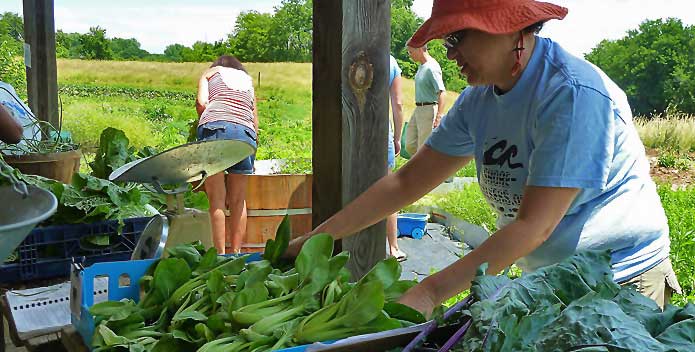There are many things you can do to save the Bay at home. Here are some tips and publications to help you get started.
- Drive less. Air pollution contributes more than one-third of all the nitrogen entering the Bay, and a large part of that is from vehicle exhaust. Make it a personal goal to combine errands and limit trips to reduce your contribution to auto emissions. And when the time comes to buy a new car or truck, choose the most fuel-efficient and low-emission gasoline, gasoline-electric hybrid, or alternative-fuel model in its class.
- Replace hard surfaces with pervious pavement. Pervious pavement is commonly used for driveways, patios, sidewalks, and parking lots. Made of asphalt, concrete, or interlocking pavers, pervious pavement allows water to soak through to the soil, improving water quality and minimizing polluted runoff and flooding.
- Install a rain barrel (or two) to your downspouts. Rainbarrels collect stormwater from your roof and store it to use later for watering your lawn and garden. If you have rain barrel, make sure you maintain it regularly.
- Buy local foods. Did you know that most foods you eat travel 1,300 miles before they get to your plate? Buying food that's grown on local farms minimizes transportation-related emissions. It also keeps local farmers in business—which is good for Bay lands and, ultimately, Bay water quality. Try shopping for your produce at farmers' markets, or join a Community Supported Agriculture farm, such as CBF's Clagett Farm. If you like oysters, here are some places to purchase them directly from local oyster farmers.
- Reduce electricity. Besides auto emissions, coal-burning power plants are among the largest sources of mercury and nitrogen compounds in air pollution.
- Make an appointment to service your septic system. Septic systems should be inspected yearly to ensure proper functioning. Failing systems can leak into the groundwater and eventually end up in local waterways and the Bay.
- Properly dispose of hazardous household items. Oils, anti-freeze, paint, cleaners, and prescription drugs should not be poured down a household or storm drain. Check with your local waste management service to find out what hazardous materials they accept.
- Make your home more energy efficient. Maryland Energy Administration offers home energy audit help. You can find a contractor to perform the audit and learn how to prepare your home for the extreme temperatures. Check out this helpful resource.
- Calculate your nitrogen footprint. CBF's Nitrogen Calculator calculates how much nitrogen you contribute to the Bay watershed. Try it now.
Resources Available to Help You Save the Bay
What Goes Down the Drain?
(2006) This playful publication was designed mainly for fourth and fifth graders who want to find out what they can do to help stop pollutants from flowing into the Bay. It is a companion piece for the large, interactive drainpipe display that CBF uses at festivals, and it includes word scrambles, trivia questions, and other games.
Detox Your Home
(2005) This poster colorfully illustrates things you can do to cut back on the use of dangerous chemicals in both your home and in your yard.
10 Things You Can Do To Save the Bay
(2006) Think about the choices you make in your home, in your yard, and at your table. Consider making changes to help lessen pollution in our waterways. This colorful poster outlines ten things you can do to help make a difference.



